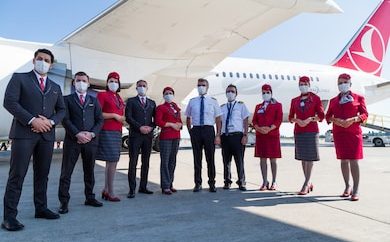With spend on business tourism worldwide achieving record levels in 2019, few could have predicted the dramatic decline in business travel brought on by the pandemic. Commercial airlines saw revenue evaporate almost overnight, as consultants, bankers and other heavy travel vocations began shifting their important client meetings from in-person visits to Zoom.
More than a year after the first COVID-19 cases were reported in Wuhan, China, high revenue business travel remains diminished as companies shy away from risk and employees remain under lockdown in their homes. However, minor bright spots are emerging for those able to travel by business jet.
While business travellers make up only 10% of airline passengers, they are responsible for up to 75% of an airline’s revenue. Unfortunately, most companies have been reluctant to allow their employees to travel, leaving airlines in trouble as they work to make up lost revenue with more low-yield, leisure customers.
When it comes to the return of business travel, estimates remain bleak at best. Bill Gates recently estimated that over 50% of business travel would not return after the pandemic, as companies have slowly adjusted to virtual work environments. Other analyst reports are only slightly more optimistic, predicting a 36% decline in business travel.
Airlines in their own right have begun to get creative in how they attempt to lure business travellers back. In addition to rigorous cleaning promotions and empty middle seats, some have lowered their thresholds to elite status qualification.
With special elite perks like free travel for companions, first class upgrades and increased flexibility on flights, airline leaders are hopeful that it will be enough to tempt more business travellers back to the skies as the vaccine rollout continues across the globe.
Alongside airlines, hotels have struggled to entice business travellers back on the road. While almost two-thirds of hotels were at or below 50% occupancy as of August 2020, hotel groups have attempted to adapt and provide a safe experience for business travellers.
This includes partnering with disinfectant providers to advertise clean rooms, as well as offering locals the opportunity to rent out rooms to work for the day.
Increased Use of Private Aeroplanes
As commercial airlines pull out all the stops to bring back business travellers, private aeroplane operators have seen a resurgence in bookings. By November 2020, business jets were operating between 85% – 90% of their 2019 volume, offering business travellers the opportunity to meet their clients in person wherever they are, without the risk of contracting the virus on a full commercial flight.
Along with the increased safety inherent with travelling in smaller numbers, private aircraft offer business travellers greater flexibility in travel times as well as the convenience of skipping the airport terminal and its security lines.
Bottom Line
The pandemic has left a dramatic impact on business travel, with few signs that a rapid recovery is imminent. Airlines, hotels and aircraft owners have become creative in their marketing as they work to lure business travellers back on the road.
With the vaccine rollout underway, those who long to get back to travel are hopeful that soon enough they will be able to get back to working with their clients in person, without the fear of negative health outcomes.

